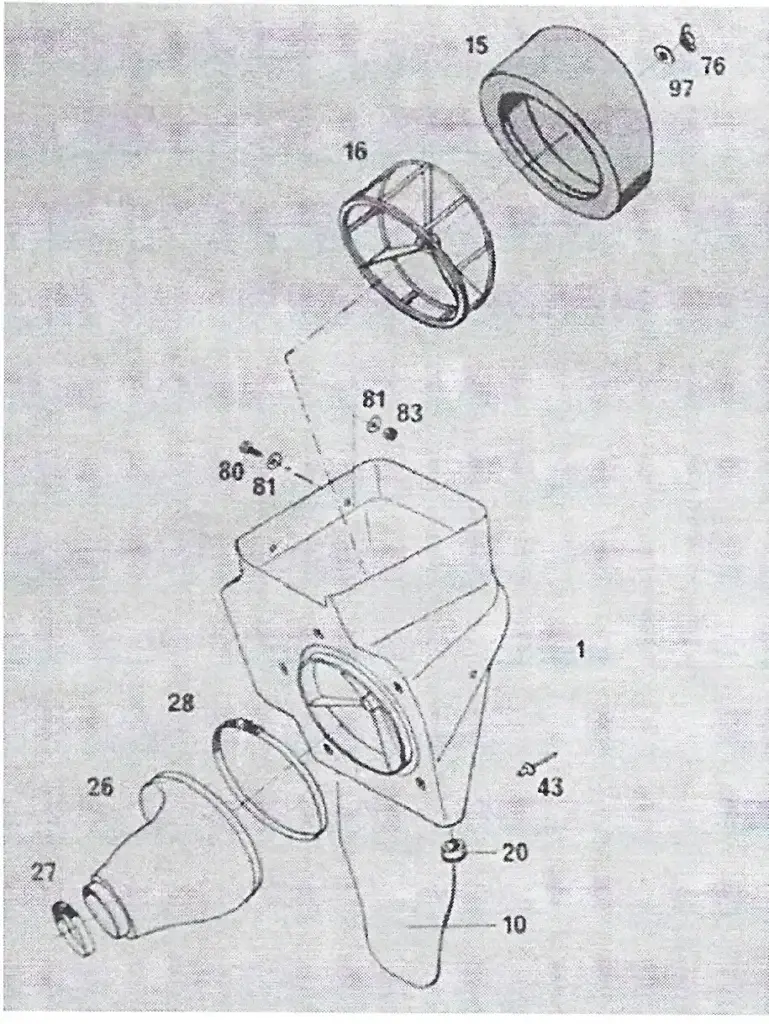KTM Air Boxes
What's the Difference
by Alan Buehner
Originally printed in issue #62 of Still….Keeping Track
There have been a lot of changes and improvements to the air boxes used on the Penton/ KTM bikes from 1972-82. The purpose of this article is to point out and show through photos from the parts lists what the differences are and what the different components look like.
With the introduction of the CMF bikes in 1972, one of the big changes was the fiberglass air box. It was designed to hold a lot of air space and most importantly, be made water proof.
Photo “A” shows what the air box looked like for the 1973-73 bikes. The arrow points to the extension on the left that allowed the right side number plate to be bolted to it.
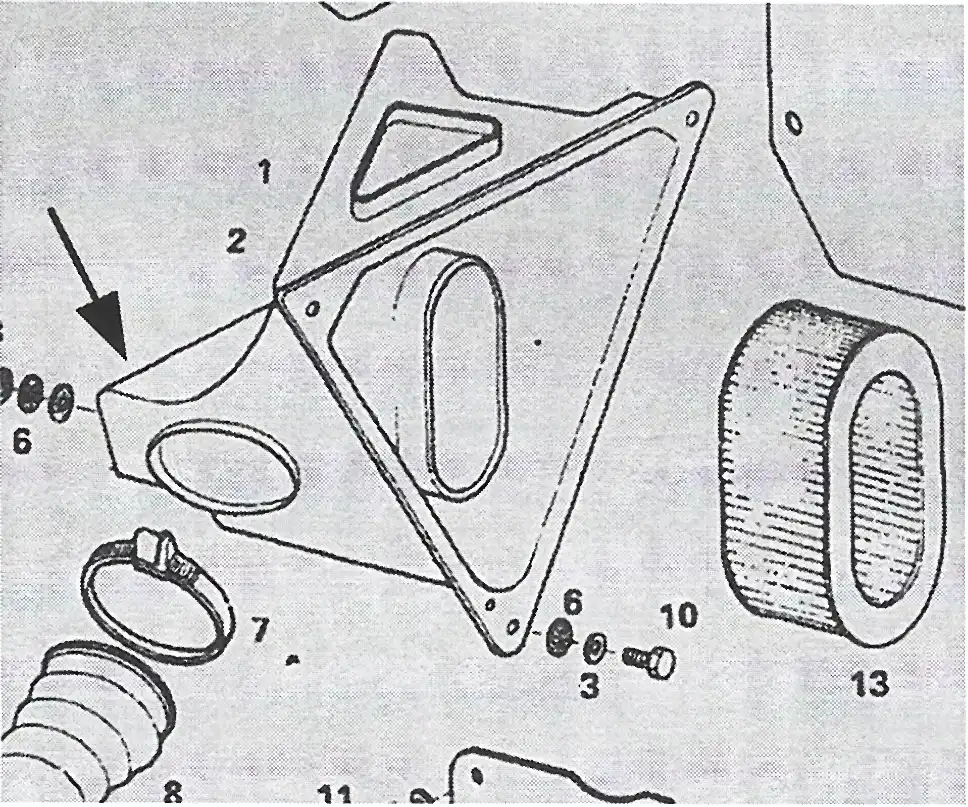
The arrow in photo “B” shows how the air box was modified, starting with the 1974-76 bikes. These bikes came with number plate/ heat shields and the extension was removed. The 1972-74 bikes all used the same air boot and air filters. The air filters shown are the paper filters that where replaced with the foam air filters which could withstand the infiltration of water into the air box.
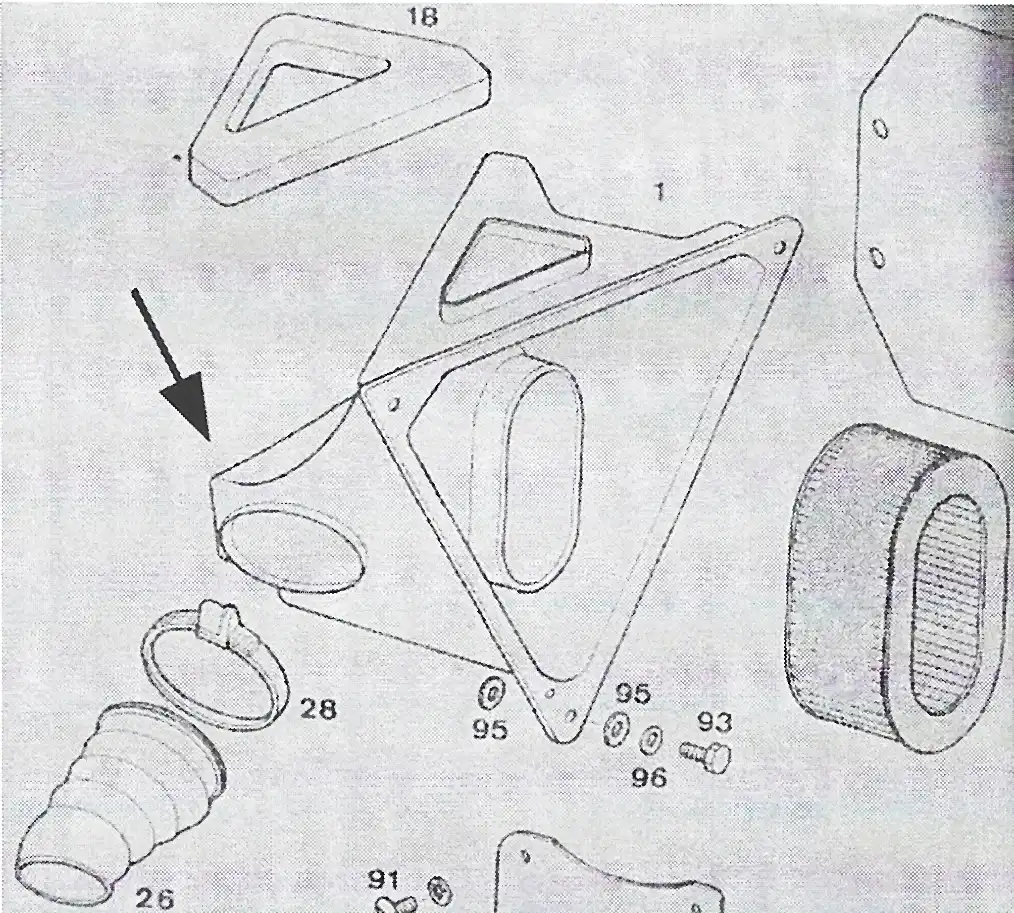
In 1976 a new lighter weight frame was introduced for the MC-5 bikes as shown in Photo “C”. The air box for these was made of alloy and this air box was used on all the 1977 GS6 and MC5 bikes. It uses a round foam air filter that fits onto a round cage in order to mount it and help it keep it's shape. This new design created confusion because instead of just one air boot fitting all sizes of engines, there were six different styles and lengths of air boots that were created. Three of the air boots offered are shown in the photo.
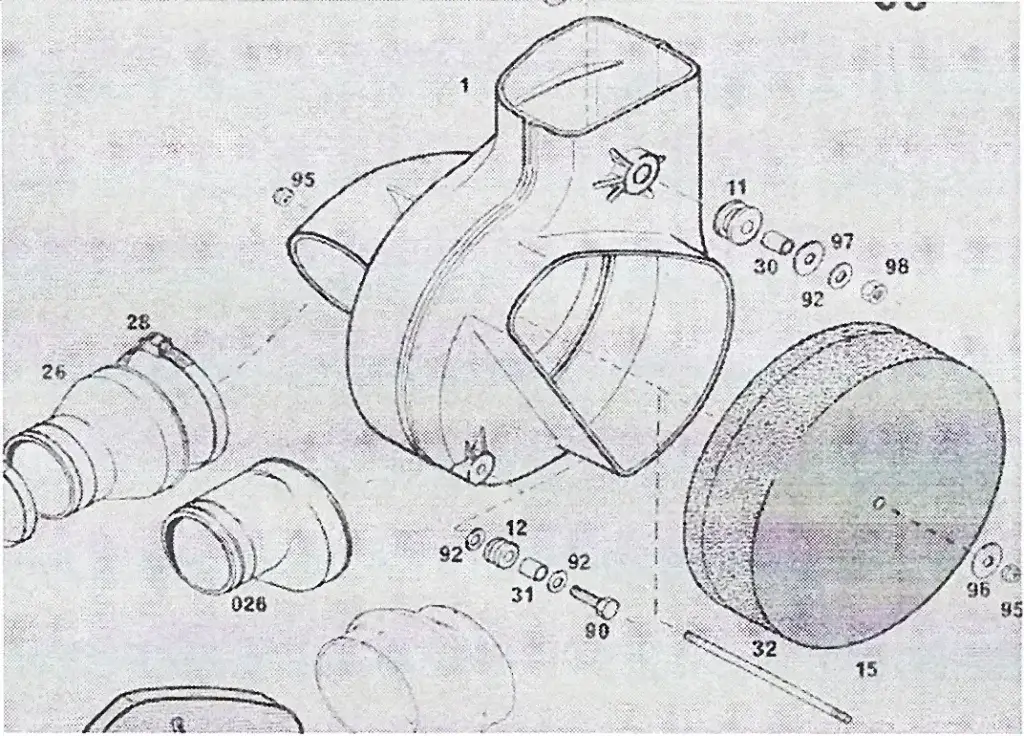
To add to the confusion, there were different lengths and styles of intake manifolds for the Bing and Lectron carburetors used on all the engines. (see Tech Tips #54 – KTM intake manifolds and Tech Tips #55 – KTM air boots).
This alloy air box worked well for protecting the engines from dust and dirt but could cause problems in high water if the top and side of the air box were not properly sealed.
In 1978 KTM came out with a plastic air box for the MC5 bikes as shown in photo “D”. I assume that this was done to cut production cost. It was similar in design to the alloy air box with an opening on the side to allow changing of the air filter, and an opening on the top. This new design created more of the same problems, more new air boots, problems in sealing the openings against water coming in, and a new style air filter cage.
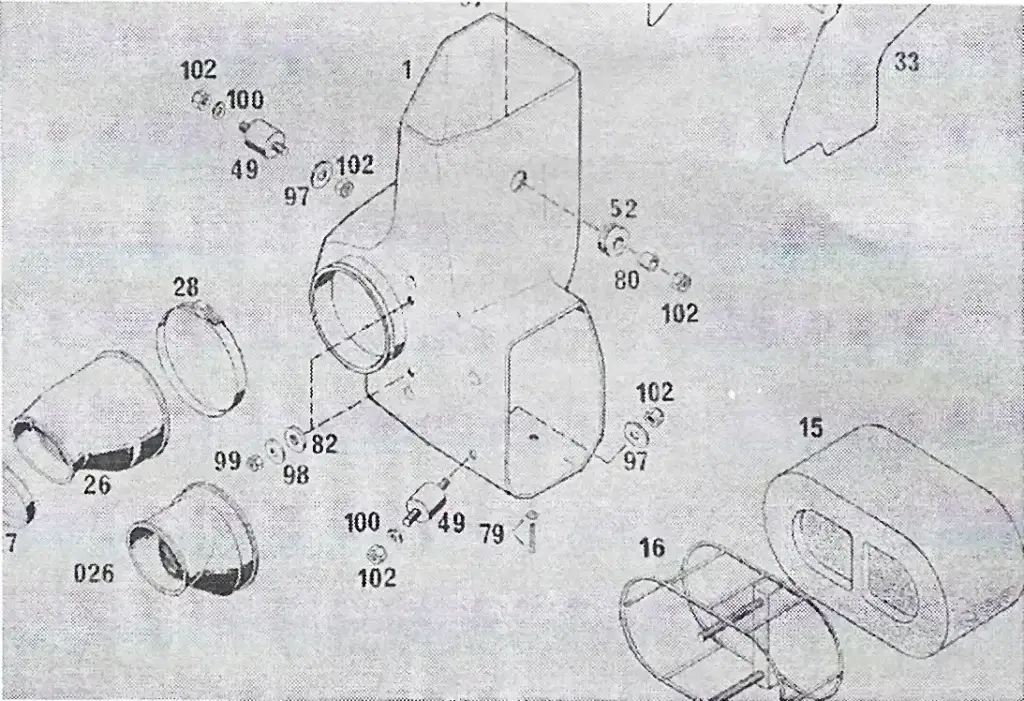
The good news was the foam air filter is the same as the one used on the 1972- 76 bikes. The bad news was that the cage has two stud that get pushed through two holes in the air box to secure it. Unless you have skinny hands this is a big challenge trying to get the cage assembly lined up with the holes. The other challenge was getting the nuts and washers on and off with the carburetor and air boot in the way. Needless to say, this air box was used only one year.
Photo "E" shows a new and improved plastic air box that was used on the 1979-81 bikes. It required different sizes of air boots but the oval air filter cage was a throw back to the 1972-76 bikes which was easy to change. It was inserted from the top of the air box and held in place with a rod and plastic filter support.
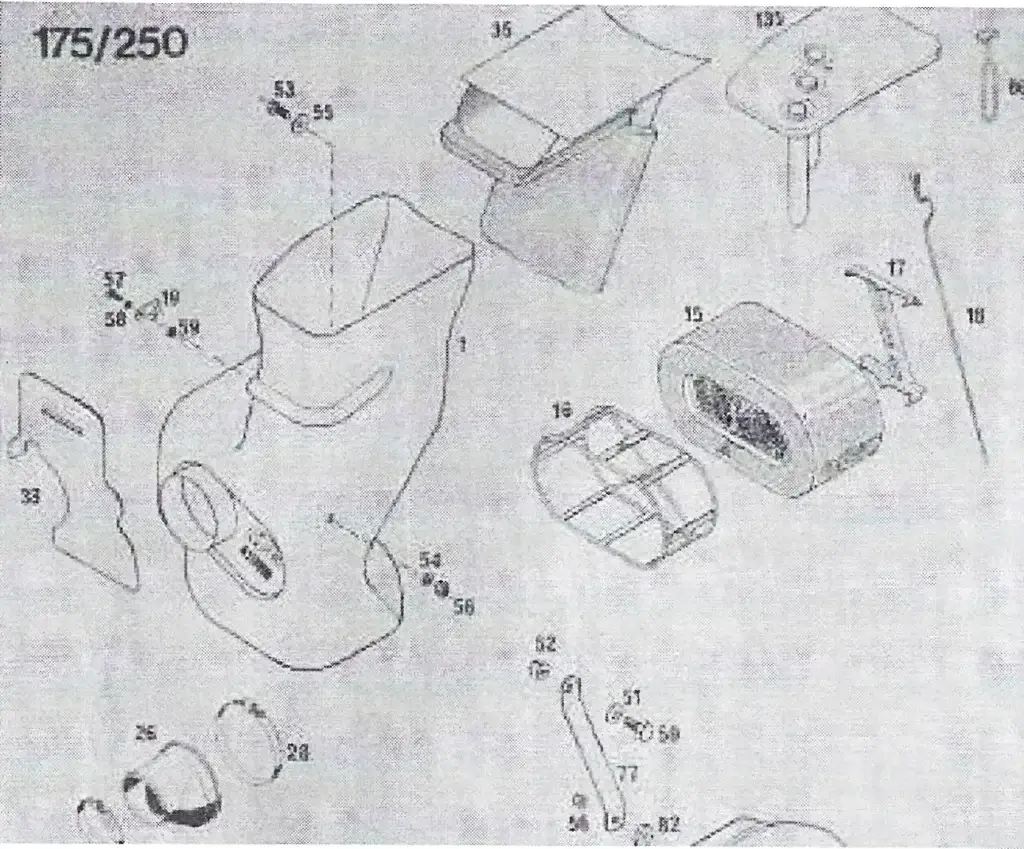
In 1980 a new frame was designed for the 125 and 420 bikes and they came with a new style plastic air box. This air box was mounted higher up into the frame and the air boot was attached to a round, hard, plastic base that mounted in the bottom of the air box (see photo "F").
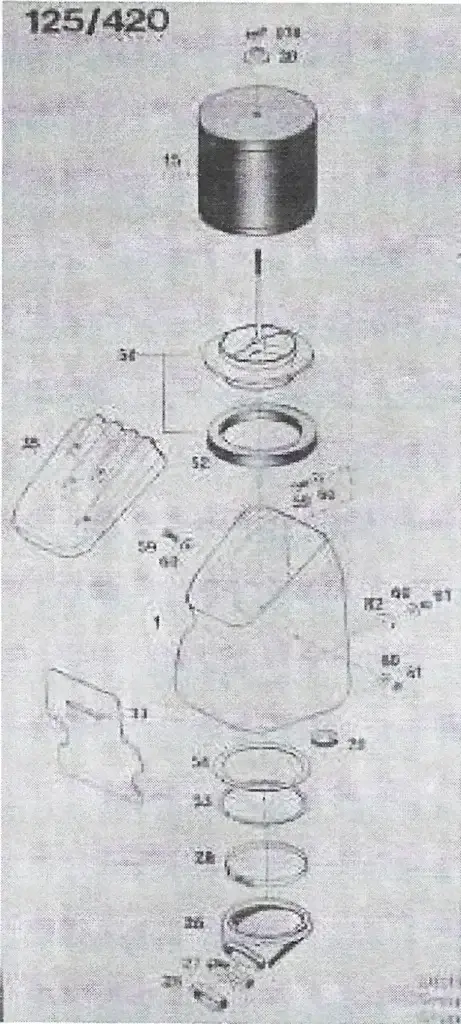
It used a new style canister style foam air filter that could be easily serviced from the top of the air box.
Apparently there were design problems with this air box since it was used only for one year.
In 1982 the next generation of plastic air boxes was introduced on the 250 and 495 bikes (see photo "G"). It used a newly designed, round, air filter cage that required a newly design foam air filter to fit it. This assembly was held in place over a threaded rod inside the air box, and secured with a washer and wing nut. This air box used only one large air boot to fit both engines. It also had a stiff mud flap molded to the bottom of it.
